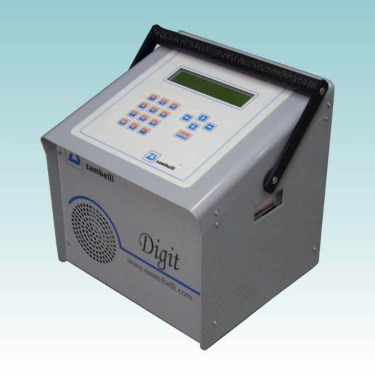 What are the challenges in instrument design?
What are the challenges in instrument design? Agilent's global environmental manager Joe Weitzel stated: "The biggest challenge we face is to combine the latest technology with the needs of environmental scientists. Our customers in the environmental field need versatile, automated, easy-to-use instruments that can meet or exceed current The level of detection. The challenge is that the instrument hardware configuration needs to have more features and better performance. At the same time, the software must be easy to use in data acquisition, data analysis/reporting, etc."
Bill Goodman, Senior Manager of PerkinElmer's Strategy and Solutions Department, said: "The challenge we face is to have very good analytical performance while processing large amounts of sample information, and to perform specific types of analysis in high-throughput analysis environments."
Meredith Conoley, Bruker’s Director of Product Marketing, said: “The challenge we face in product design is to truly benefit users and analytical laboratories. We must not only innovate in product hardware, but also improve the software.â€
Pamela Millett, HORIBA sales manager, said: "The biggest challenge is to design a product that can simultaneously adapt to the needs of the global market. The choice of different user data collection and retrieval parameters is very different."
Adam Gilmore, HORIBA's fluorescence department manager, said: “In addition, a similar challenge is to meet the continuous monitoring and processing of large amounts of data information through software that minimizes the involvement of people.â€
What do you think is the development trend of environmental monitoring?
Gilmore of HORIBA said: "The current and future trends seem to focus on the application of new regulations for the use and management of fuel petroleum products. Another emerging trend is the use of our Aqualog fluorometer with other monitoring instruments, including GC. And LC for disinfection by-products of the monitoring system."
Agilent Joe Weitzel said: “For conventional environmental contract laboratories, the trend is still to be applied in the industrial field. This market requires the low acquisition cost and high reliability of the instrument. For example, GC and GCMS, we found the price of carrier gas. More and more expensive.Customers want us to use other gases such as hydrogen instead of helium as a carrier gas.For scientists in the research field, they are still pursuing high performance solutions.They want more information and better sensitivity. , Better software: They want to not only perform qualitative and quantitative analysis of already trace contaminants, but also study lower levels of unknowns, which is why most environmental laboratories deploy triple quadrupole mass spectrometry and flight time. One reason for mass spectrometry. All environmental laboratories want to reduce sample preparation time or sample preparation."
Bruker D'Silva said: "In addition to the accurate qualitative and quantitative detection of new targets, we believe that continued stability and reliability are also important. In the future, we will shift from the analysis of objects to include unknowns. System analysis.To achieve this goal in the industrial field, maintaining a certain degree of reliability and considerable sensitivity is a challenge.Our customers need to analyze more samples, spend less time to maintain the instrument, hope to reduce through software analysis error."
PermanElmer Goodman said: "We believe that a growing trend is that more and more sample analysis requires high spatial and temporal resolution. In addition, the industry hopes to pay more attention to factors that affect human health, such as air and water. It enables real-time and on-site analysis that drives environmental monitoring."
Features
Application:The machine is used for series of chemical filament fiber twisting.
1. The machine is adopt servo motor and high strength belt, instead of mechanical cam, convenient maintenance, low power consumption and low noise. The guide rod is controlled by precise guide rail, it realized the precise electronic winding, stepless adjustable to ensure the good forming and unwinding of the bobbin.
2. The electronical system is adopt synchronous motor transducers technology, servo control system adopted to winding. The quality of yarn improved by real-time monitoring process speed.It can not only control the transmission precision,but also reduce the energy consumption, that caused unwinding easily.
3. It is more convenient operation by touch screen.
4. Using 320mm straight bobbin, maximum take-up capacity is 1.8kg.
Two-For-One Twisters,Two For One Twisting Machine,Two-For-One Heat Twister,Fiber Processing Machinery
XINCHANG LANXIANG MACHINERY CO.,LTD , http://www.xclxjx.com